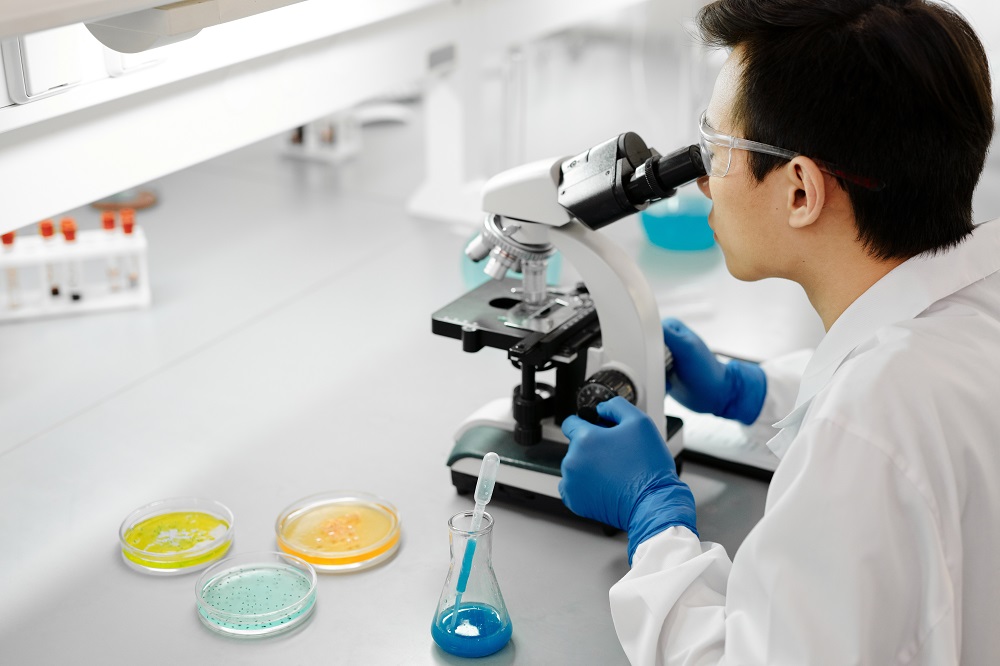Welcome to the fascinating world of microorganisms! These tiny creatures may be invisible to the naked eye, but they play a crucial role in our lives. From beneficial bacteria that aid digestion to harmful viruses that cause illness, microorganisms are everywhere. In this blog post, we will explore the science behind these fascinating life forms and discover how they impact our health and well-being. So fasten your seatbelts as we take a deep dive into the world of bacteria and viruses!
What are microorganisms?
Microorganisms, also known as microbes, are tiny living organisms that cannot be seen with the naked eye. They can only be viewed under a microscope and they exist in almost every environment on earth. Microbes come in various shapes and sizes, ranging from single-celled organisms to complex multi-cellular creatures.
There are different types of microorganisms such as bacteria, viruses, fungi and protozoa. Each type has its unique characteristics and plays an important role in our world. Bacteria are unicellular organisms that can live independently or form colonies while viruses depend on other cells to survive.
Fungi feed on organic matter and help decompose dead plants and animals which is essential for soil fertility. Protozoa, on the other hand, play an important role in aquatic ecosystems by serving as food sources for larger organisms.
Microbes have won their place at the top of the evolutionary ladder due to their adaptability to extreme environments like hot springs or glaciers where no other life forms could thrive. Their ability to survive harsh conditions like lack of oxygen makes them useful in industrial processes such as fermentation which produces beer yogurt among others.
Microorganisms may not be visible but they play a significant role in our daily lives whether it’s through disease-causing ones or helpful ones used for medical research or production purposes.
The different types of microorganisms
There are various types of microorganisms, each with a unique structure and function. The most common types include bacteria, viruses, fungi, protozoa and algae.
Bacteria are single-celled organisms that can be found in almost every environment on earth. They play a crucial role in the food chain as decomposers, breaking down organic matter into nutrients for other organisms to consume. Some bacteria even produce antibiotics.
Viruses are smaller than bacteria and cannot survive without a host cell. They infect living cells and use them to replicate themselves. This can lead to diseases such as the flu or COVID-19.
Fungi come in many forms ranging from single-celled yeasts to multicellular mushrooms. They break down dead plant material and have many practical uses like baking bread or producing antibiotics.
Protozoa are single-celled eukaryotic organisms that live in water or soil environments. Some species cause diseases like malaria while others help maintain ecological balance by feeding on bacteria.
Algae are photosynthetic aquatic organisms that produce oxygen through photosynthesis thereby playing an essential role in the ecosystem’s oxygen supply chain.
Understanding these different types of microorganisms is vital as it helps us understand how they interact with our bodies and ecosystems around us.
The benefits of microorganisms
Microorganisms have been around for billions of years and they play a vital role in our ecosystem. They are the foundation of life on Earth, as they help to break down organic material and recycle nutrients back into the soil. This process is essential for the growth of plants and crops that we rely on for food.
A specific type of microorganism called probiotics can also be beneficial to humans. Probiotics are live bacteria and yeasts that are good for your health, especially your digestive system. They help to balance out the bad bacteria in your gut, which can prevent certain illnesses such as diarrhea or irritable bowel syndrome.
Microorganisms also have industrial uses such as producing antibiotics used by doctors to treat infections caused by harmful bacteria. In fact, nearly half of all antibiotics used today are made from microorganisms found in soil.
Furthermore, some species of microorganisms play an important role in creating fermented foods like yogurt, cheese and sauerkraut – all known for their many health benefits.
While we often think about microorganisms as something dangerous or harmful, there are many instances where these tiny organisms provide significant benefits both environmentally and medically.
The dangers of microorganisms

Microorganisms are an essential part of life, but some can pose serious threats to human health. Bacteria and viruses are the most common types of microorganisms that cause diseases in humans. These tiny organisms can be found everywhere from soil to water and even on our own bodies.
Bacterial infections can range from minor illnesses like strep throat or urinary tract infections to life-threatening conditions like sepsis. On the other hand, viral infections such as influenza or COVID-19 can also lead to severe respiratory problems and even death in some cases.
One significant danger posed by both bacteria and viruses is their ability to mutate quickly, making them resistant to antibiotics or vaccines developed against them. This phenomenon has led scientists and doctors worldwide into a race against time as they try to keep up with these rapidly evolving microorganisms.
Apart from this, improper hygiene practices contribute significantly towards the spread of harmful microorganisms. Contaminated food, unclean surfaces, poor personal hygiene habits all contribute towards creating an environment where disease-causing bacteria and viruses thrive.
Understanding the dangers associated with microorganisms is crucial for safeguarding public health. By adopting good hygiene practices coupled with extensive research efforts aimed at developing effective treatments for bacterial and viral infections will go a long way in mitigating these risks.
How to protect yourself from microorganisms
Microorganisms are everywhere, and while some of them can be beneficial to our health, there are also many that can cause harm. To protect yourself from harmful microorganisms such as bacteria and viruses, it is important to take certain precautions.
Firstly, one of the most effective ways to protect against microorganisms is by maintaining good hygiene practices. This includes frequently washing your hands with soap and water for at least 20 seconds each time or using hand sanitizer when soap and water are not available.
It’s also crucial to avoid touching your face as much as possible since this is a common way in which microbes enter our bodies. Covering your nose and mouth when you cough or sneeze will further reduce the spread of germs.
In addition, it’s essential to maintain cleanliness in your surroundings regularly. Clean all surfaces regularly with disinfectants especially if they come into contact with food, body fluids or waste products.
Lastly but importantly; getting vaccinated against infectious diseases like flu helps prevent serious illnesses caused by microorganisms such as viruses.
By adopting these simple measures consistently in our daily lives we can keep ourselves protected from harmful microorganisms.
Conclusion
The science of microorganisms is fascinating and complex. From bacteria to viruses, these tiny organisms play a crucial role in our lives. They can be incredibly beneficial by aiding digestion, producing antibiotics, and decomposing waste products. However, they can also be harmful if not handled properly.
It’s important to understand the different types of microorganisms and how they function in order to protect ourselves from their dangers while reaping their benefits. By practicing good hygiene habits such as washing hands regularly and cooking food thoroughly, we can prevent the spread of harmful microorganisms.
It’s essential that we continue studying microorganisms to learn more about them and find new ways to utilize them for our benefit without putting ourselves at risk. With continued research into this fascinating field, who knows what other discoveries we’ll make about the world of bacteria and viruses?








